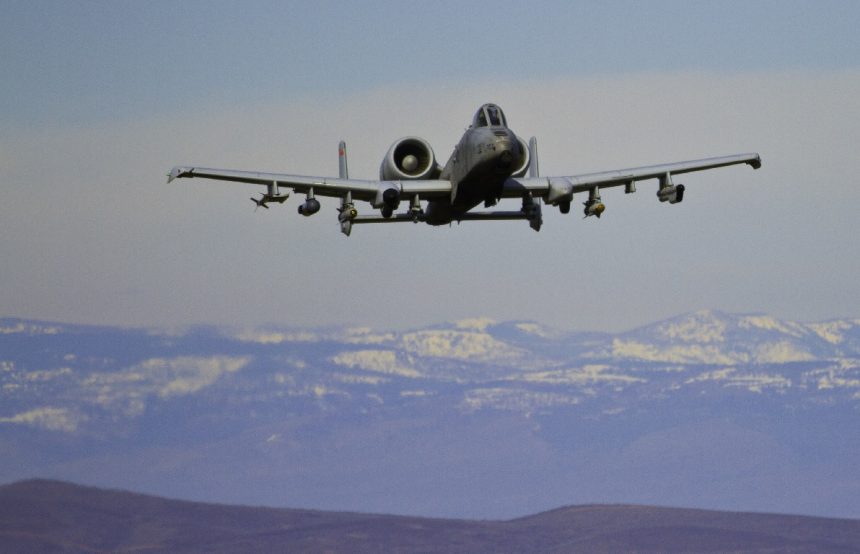The U.S. Air Force has revealed that the A-10 retirement will begin in fiscal year 2018.
Taken on Feb. 26, the picture in this post shows an A-10 Warthog in action during a joint air attack team exercise at Yakima Training Center, Washington, where the “Hogs” trained alongside the AH-64 Apache helicopters deployed at Joint Base Lewis-McChord, Wash., providing Close Air Support (CAS) to Soldiers with 1-2 Stryker Brigade Combat Team.
Still, this kind of training will come to an end in the near future. In fact, in spite of its unmatched capabilities in the CAS role, the U.S. Air Force will soon retire its A-10 fleet.
As reported by DefenseNews.com, the service has recently revealed the number of A-10s that will be retired each year before the type is completely withdrawn from service in 2022.
The plan call for the retirement of 49 planes or 2 squadrons in fiscal year (FY) 2018. This will be followed by 49 aircraft in FY2019, 64 in FY2020, and 96 in FY2021.
During a hearing held at the House Armed Services Committee on Mar. 16 Chief of Staff Gen. Mark Welsh said that accelerating the retirement of the A-10 will help to better support the stand up of F-35 squadrons. “If we keep the A-10, by FY21 — the scheduled FOC (Final Operational Capability) date for the F-35 — we will be about 50 percent short of the maintenance manpower we need to field the F-35. So it’s a manpower problem.”
However, even though the F-35 can perform the CAS mission, it would be too expensive using the Lightning II in the A-10 role, thus leaving the problem of the Hog replacement unsolved. As explained by Welsh himself: “The F-35 is intended to the high-threat CAS platform, (with the retirement of the A-10) we are losing CAS capacity.”
Image credit: Sgt. Cody Quinn/28th Public Affairs Detachment / U.S. Army
















